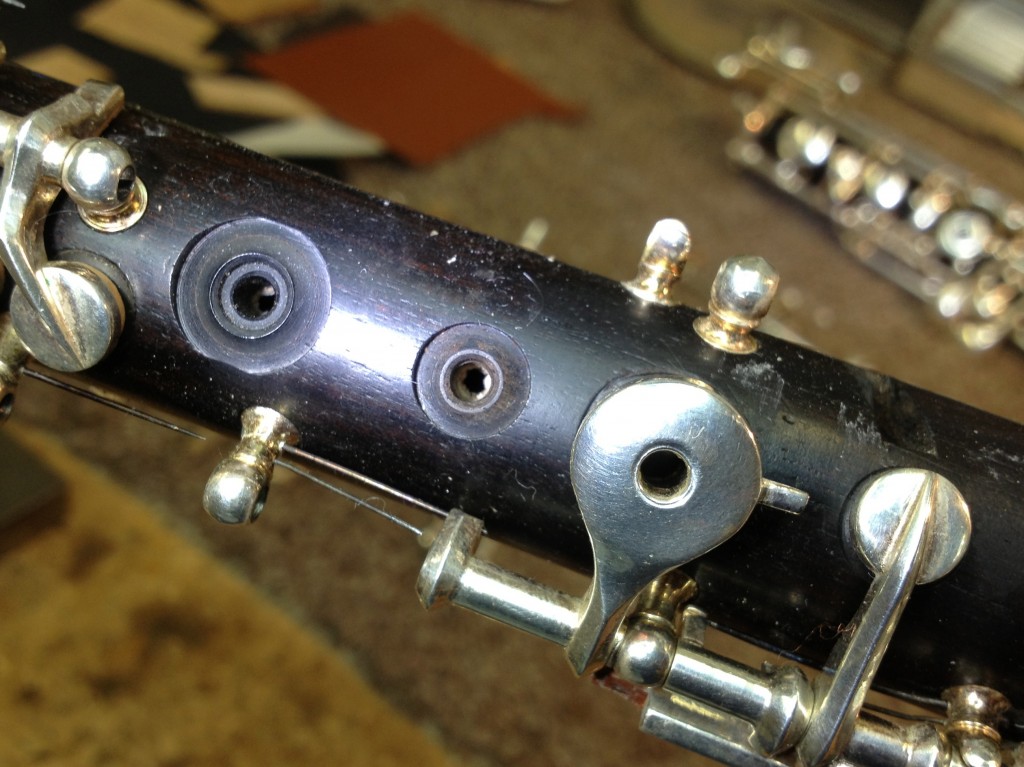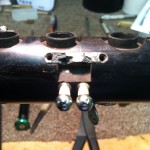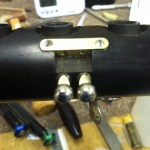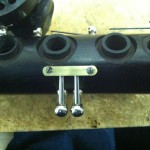Post 18: Yet another example of why you need a yearly cleaning!
We received the oboe below for a cleaning and set-up this week. I had completely overhauled this oboe just over two years ago and the customer has been happy until recently. The customer was complaining of tuning issues, although up until recently the oboe played in tune just fine. I played the oboe before working on it and it definitely had a problem. As I started disassembling the oboe I immediately discovered the problem. If you look in the picture below, you will notice the two open tone holes have “stuff” in them. This “stuff” is dust/dirt build-up from repeatedly playing and swabbing out the oboe. Even though you swab or feather your oboe to remove moisture, you cannot get it all. And each time you do so, microscopic dust particles attach themselves to the moisture and over time it adds up to a clogged tone hole. Please review my previous article “Oboe Adjustment? or Cleaning?” to see why it is so important to have your oboe cleaned and set-up each year. Contact Jason to set up your appointment and to have your oboe playing world transformed into a life of ease!




